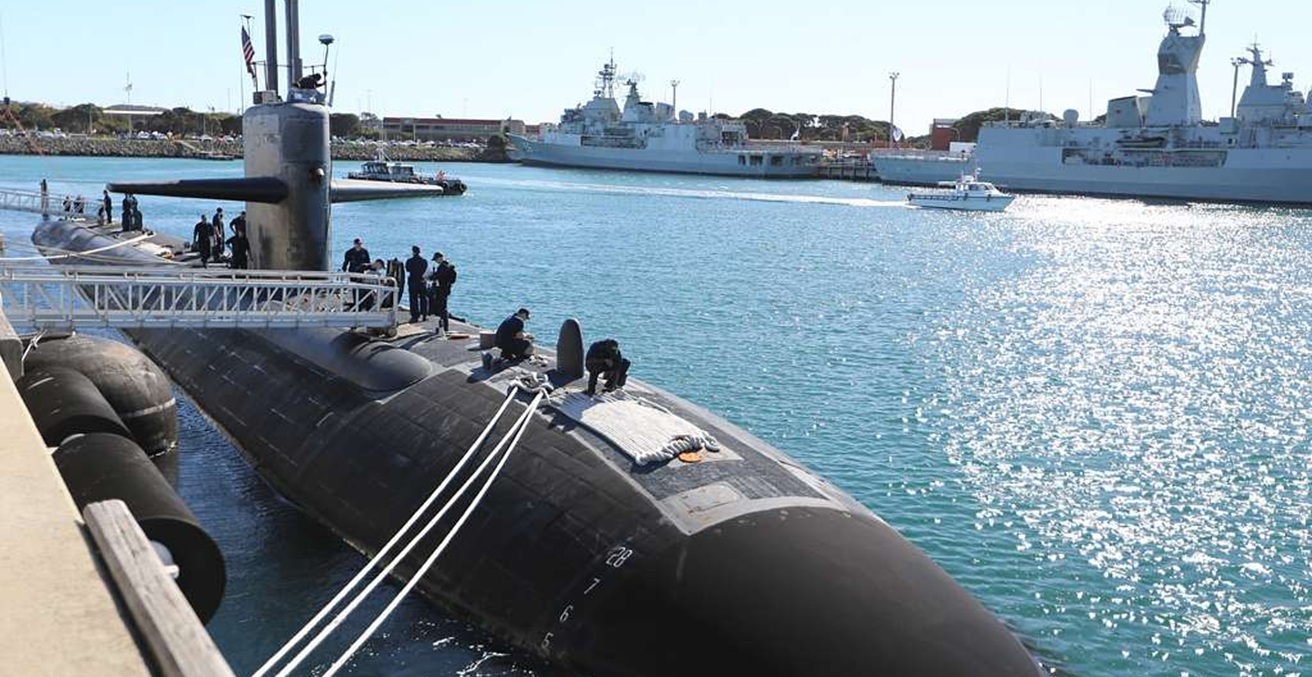COVID-19 underlined the urgent need to correct the imbalances in globalisation, multilateral institutions, and power structures. Balancing domestic interests and leading multilateralism and global cooperation in the post-COVID-19 world will define Abe’s legacy.
COVID-19 arrived amidst fierce US-China strategic competition, an eroding European project, fractured global economic governance architecture, contested hyper globalisation, and intense techno-nationalism. The pandemic has further intensified the debate on the potency of the liberal international order. While some argue the pandemic will create a world that is less open and free, others suggest it will accelerate rather than alter the basic direction of international history. Yet others think it will hasten a power shift to the East and redirect US-centric globalisation to a China-centric globalisation.
Meanwhile, China has leveraged the strategic opportunity presented by disarray in global leadership. It invested political capital in not just controlling the narrative on “Wuhan Virus” and influencing UN institutions, but projecting itself as an alternative provider of global goods as West is “falling apart.” Beijing’s objective is to project credibility of its party-state and deflect scrutiny of systemic failures of the Chinese Communist Party’s (CCP) initial response to COVID-19 as the global conversation on Beijing’s accountability gains momentum.
Whether it is expanding strategic ambitions through a Health Silk Road, bargain hunting, pushing “wolf warriors” backed by CCP propaganda, or coercive economic blackmailing, China is persistent in its quest for shaping a Sino-centric order. Beijing, dissatisfied with the existing order, is seeking change in the US-led system founded on norms that are incompatible with the organising principles of the CCP and threaten regime’s legitimacy.
Japan does not favour the idea of a Sino-centric order. While Beijing is a revisionist stakeholder, Tokyo has positioned itself as a stabiliser of the US-led system. Japan is positioned as a leading advocate of international rules and custodian of global commons as Pax-Sinica designs take shape. To this end, Prime Minister Abe Shinzo, along with Yachi Shotaro and Kanehara Nobukatsu, conceptualised the universal value-based strategic formulation of a Free and Open Indo-Pacific (FOIP) in 2016.
Since its inception, Japan has pragmatically adjusted the FOIP concept from a “Strategy” (FOIP 1.0) into a “Vision” (FOIP 2.0). FOIP 1.0 was a predominantly China-focused strategy. But unpredictability in Trump’s approach towards allies and hedging against US abandonment while managing geo-economic interests amidst the US-China trade war tested Abe’s policy choices. Subsequently, FOIP 2.0 adjusted as a relatively more cooperative construct, primarily because of some reservations on adopting a purely confrontational posture towards China regarding economic issues. Japan’s objective is to avoid projecting FOIP as a divisive strategy in order to amass support from ASEAN.
However, the apparent rapprochement in Sino-Japan relations since 2017 has been influenced by tactical calculations rather than any fundamental attitudinal shifts, as contested sovereignty and history issues remain unresolved. On China policy, divergences among policy elites in Tokyo became evident with Nikai Toshihiro and Imai Takaya taking the lead over Yachi Shotaro and Kanehara Nobukatsu.
Chinese “nonchalance” towards the Indo-Pacific is shaped by Beijing’s confidence in its enormous financial resources to advance regional economic initiatives and its strategic ability to manage emerging challenges.
Post-COVID 19, the sustainability of FOIP is deliberated, given each country’s severely stretched economic and security resources. While the pandemic has exacerbated a new wave of economic nationalism, it also presents opportunities for cooperation and multilateral responses. Isolationism is not an option.
While mismanagement of COVID-19 led to China’s Chernobyl moment, it also exposed corrosion in US leadership. As the third largest economy, Japan should demonstrate leadership in Indo-Pacific by upholding a rules-based maritime order, pushing quality infrastructure financing, and championing trade liberalisation.
COVID-19 can be the much needed push to shed individual hesitation and mobilise strategic resources to deliver public goods in the Indo-Pacific. The long-debated Quad Plus framework is taking shape. It is time to bring not just Southeast Asian stakeholders, but also European powers like France into the conversation. Going forward, coordination among the Quad Plus powers and their equation with ASEAN needs nurturing.
Beijing’s maritime posture and its grey zone tactics will only intensify. Even amidst a pandemic, Beijing’s maritime behaviour demonstrates its resolve to leverage the tactical opportunity as the US remains distracted in battling COVID-19. Japan must thus increase its presence in the international waterway and uphold international maritime principles.
In a scenario where Sino-US strategic rivalry escalates into regional conflict, Tokyo will be expected to play a greater role within the US-Japan alliance framework. Beijing’s posture may present greater incentive for Tokyo to build up its military in the long term, thus “thinking the unthinkable.” The unfolding shifts in Japan’s security policy enable it to proactively contribute to regional order.
Geo-economically, Tokyo will have to continue to anchor free trade. Trump’s protectionist tendencies have obligated Abe to step up and lead the Comprehensive and Progressive Agreement for Trans-Pacific Partnership (CPTPP) and conclude its Economic Partnership Agreement with the EU following Brexit. Now, Japan is steering the debate to bring its strategic partner India into the Regional Comprehensive Economic Partnership to offset Beijing’s influence within the mega-free trade agreement, often touted as strategic tools in great power competition.
Meanwhile, the Sino-US decoupling debate will intensify post-COVID 19. Chinese elites have analysed the trade war from the prisms of structural conflict, competing development models, and export of domestic problems. China’s 14th five-year plan focuses on self-reliance, home-grown innovation, and its domestic market to steer the economy. The pandemic has disturbed global supply chains and the Japanese economy faces the collateral damage of over-dependence on China.
Tokyo allocated $2.25 billion to help firms move out of China. Re-shoring of strategically important production would inject energy into small and medium enterprises and advance provincial redevelopment, which then will further the political prospects of the ruling Liberal Democratic Party. Whether it is decoupling from China or merely a short-term adjustment to the current risks remains to be seen. Japan must incentivise diversifying supply chains out of China to key FOIP partners in Southeast Asia.
Economic security led to deeper scrutiny of foreign investments in core industries. Even before the pandemic, the National Security Secretariat added an economic unit to monitor suspected intellectual property abuses and technology theft. Battle for 5G and steering the fourth industrial revolution will need a strategically coordinated response from Indo-Pacific powers.
Strategic infrastructure is an important tool to shape favourable geopolitical outcomes. China’s Belt and Road Initiative (BRI) will continue post-pandemic, but debt distress along the BRI will pose serious challenges to Chinese operations. Some fear that Beijing may employ predatory economics to convert debts into assets. In this regard, Tokyo has demonstrated global leadership through its Expanded Partnership for Quality Infrastructure initiative underpinned by global governance standards and responsible debt financing practices.
Tokyo has joined forces with the US, Australia, EU, and India in advancing infrastructure and capacity building. Given the severe stress on Japanese economic resources following the pandemic, it is imperative to conceive joint projects, pursue smart co-financing, and better strategise aid.
Post-COVID-19, if Indo-Pacific powers adopt a zero-sum approach towards China, it will be counter-productive. However, this does not imply that Tokyo is willing to compromise on the basic tenets of a rules-based architecture. Middle powers like Japan, along with the US and other Indo-Pacific strategic partners, must offer quality leadership and engage China with the goal of shaping it as a responsible power. One immediate opportunity for Japan, together with the support of EU, US, and Australia, is supporting an independent investigation into the outbreak of the virus.
Dr Titli Basu is an associate fellow at the Manohar Parrikar Institute for Defence Studies and Analyses, India. Her research interests include strategic affairs in East Asia with focus on Japan, and great power competition in the Indo-Pacific. She was a visiting fellow at the National Institute for Defense Studies (NIDS, Tokyo) in 2017.
This article is published under a Creative Commons Licence and may be republished with attribution.
If you are interested in learning more about Japan’s strategy in the Indo-Pacific, the AIIA invites you to attend a free webinar on Wednesday, May 27 at 6:00 PM AEST. Tickets are available here.




